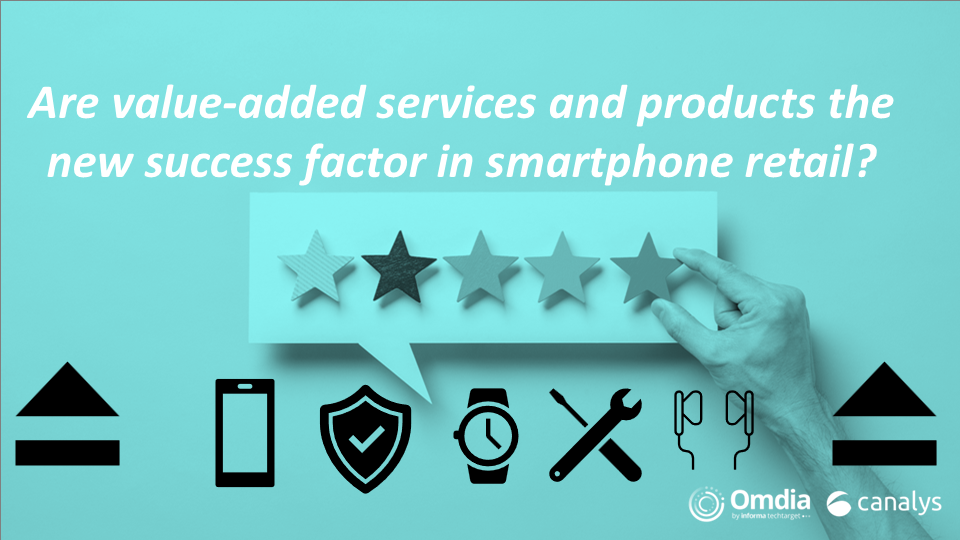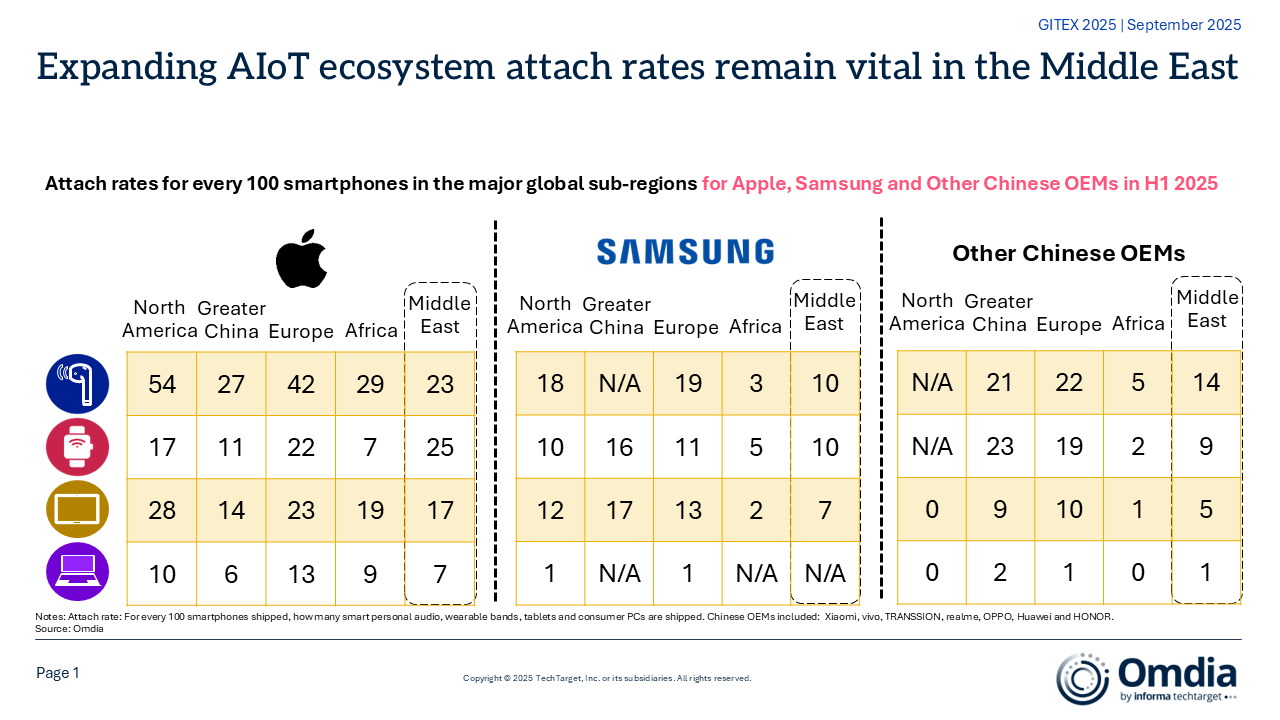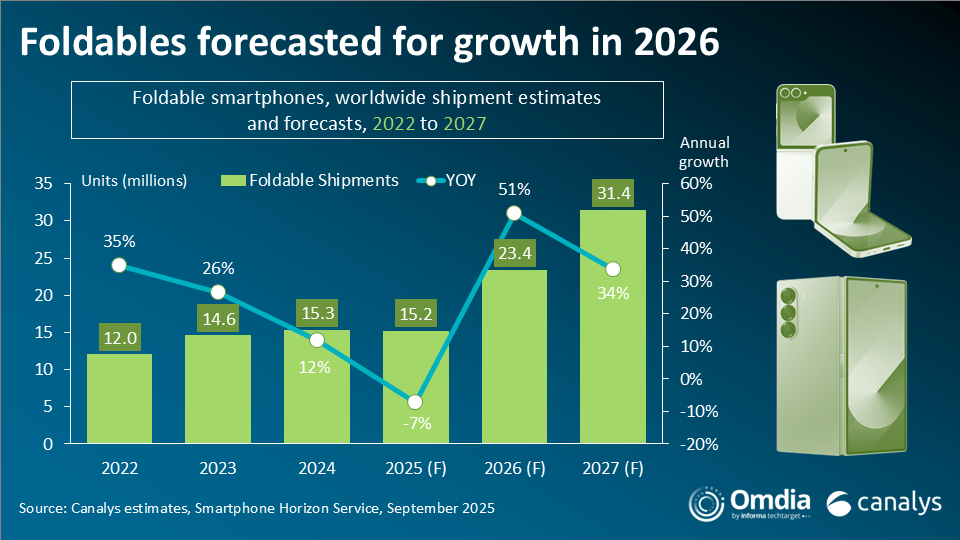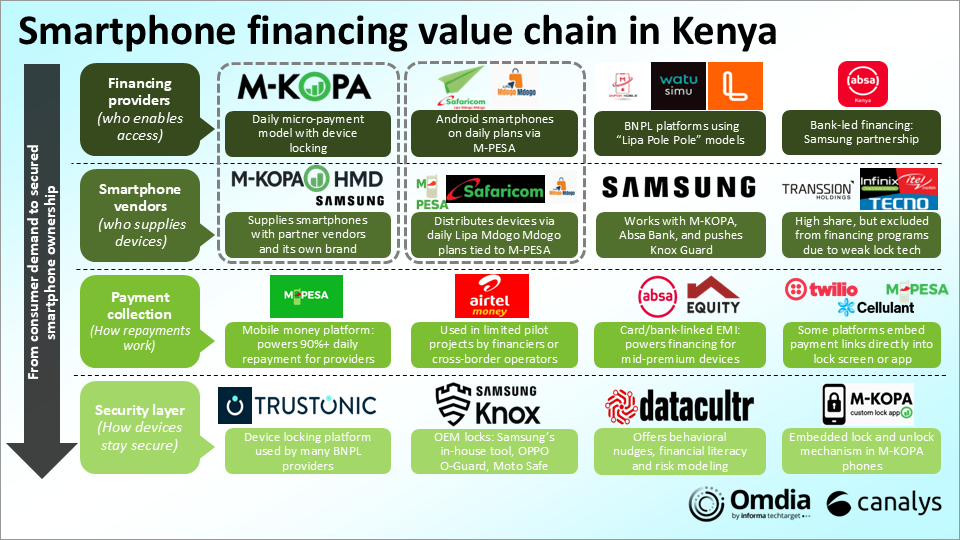Expanded Scale and Leadership in B2B: From R&D to ROI
With a combined permissioned audience of 50+ million professionals, TechTarget and Informa Tech’s digital businesses have come together to offer industry-leading, global solutions that enable vendors in enterprise technology and other key industry markets to accelerate their revenue growth at scale.
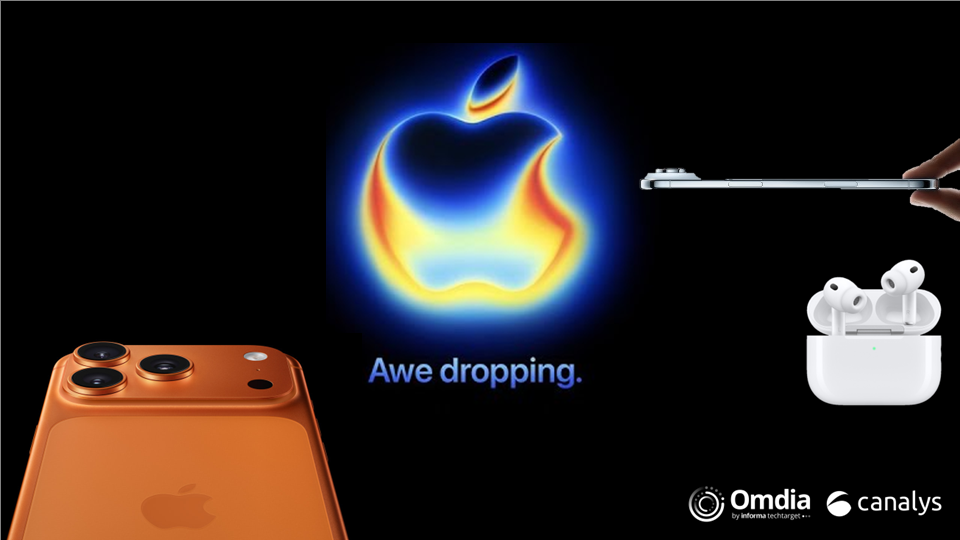
Apple’s “awe dropping” event: a return to hardware boldness
Apple’s recent “awe dropping” event marked a return to hardware boldness, with the introduction of the revolutionary iPhone Air leading a paradigm shift in design and ecosystem control. By pioneering eSIM adoption on a global scale and emphasizing interoperability across its product lineup, Apple is reaffirming its dominance as an industry innovator and ecosystem leader.
.png)

Apple’s September showcase was not just another iPhone launch—it was a statement of intent. By putting hardware innovation back in the spotlight, Apple signaled a renewed confidence in design, ecosystem control and market segmentation. At the center of this shift is the all-new iPhone Air, the first eSIM-only model to expand globally and a potential tipping point for digital connectivity. Alongside deeper IoT integration across Watch and AirPods, the event underscored Apple’s ambition to tighten device interoperability and extend its ecosystem advantage..
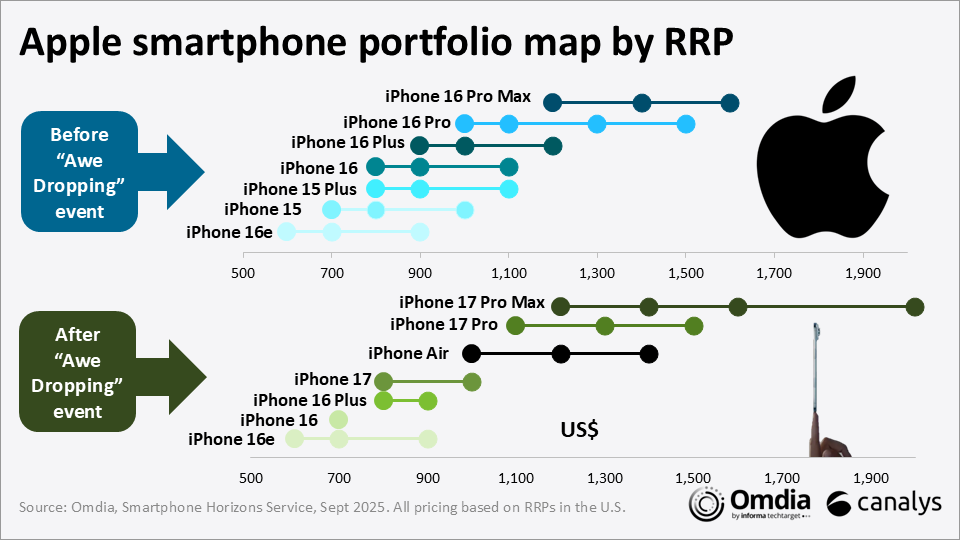
iPhone Air: a new dimension in the premium
By retiring the Plus and introducing the Air, Apple has gone far beyond a simple rebrand. Omdia forecasts the Air will nearly double the sales of its predecessor in H2 2025, highlighting this portfolio reset as a decisive course correction.
Past mid-tier experiments—the mini and Plus—often faltered, squeezed between budget leaders and premium flagships. They struggled in markets like China and India, where price-performance and display size dominate consumer choice. The Air shifts the narrative by elevating slimness and design as aspirational features.
Rather than a successor to the Plus and mini, the Air is a redefinition of Apple’s premium product offering. It resets its product category in four ways:
- Name simplification: by dropping the “17” label, the Air becomes a standalone category, distancing itself from the legacy of mini and Plus.
- Design testbed: the ultra-thin titanium-reinforced design forces Apple to push materials and engineering limits, positioning the Air as a proving ground for future innovations, including foldables.
- Chip strategy: building on the C1 wireless chip from the iPhone 16e, the Air integrates Apple’s own 5G modem and wireless components. This delivers greater power efficiency, helps manage AI-driven workloads, and reduces reliance on suppliers like Qualcomm.
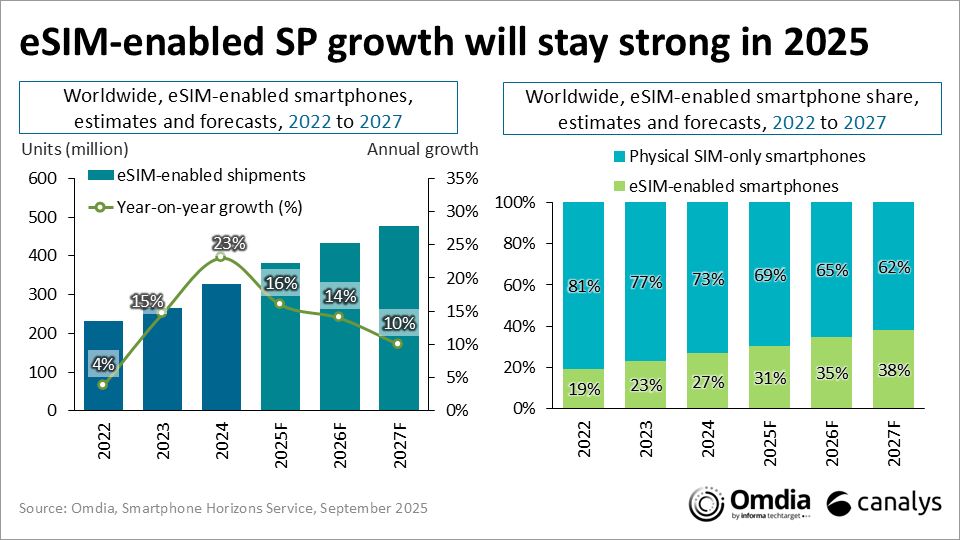
eSIM adoption: Air as the global tipping point
The iPhone Air is also Apple’s first eSIM-only model to roll out globally, accelerating the industry’s shift away from physical SIM cards. While the U.S. has been eSIM-only since the iPhone 14, other markets have relied on hybrid or physical SIM SKUs. Most operators are technically prepared, but managing the consumer transition will be critical to avoiding churn.
The boldest move is in China, where eSIM penetration in smartphones is effectively zero due to regulatory hesitancy. Only China Unicom has supported eSIM in iPads, but the iPhone Air could mark a turning point, particularly as the popularity of cellular smartwatches—including kid-focused devices—builds regulatory openness.
Globally, Apple has been the prime driver of eSIM adoption, motivated by sleeker designs, improved durability and greater influence over the consumer journey. According to Omdia, 27% of smartphones sold in 2024 were eSIM-capable, with iPhones making up more than half.
Limiting the shift to the Air keeps overall risk low but provides operators with valuable real-world experience before a wider portfolio rollout. For Apple, the Air becomes a controlled experiment in preparing markets for a fully digital connectivity future.
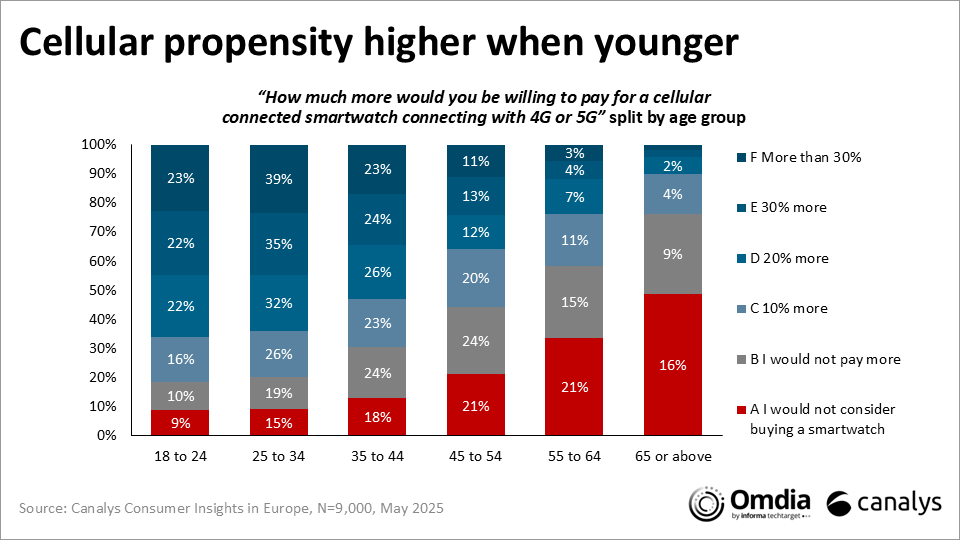
IoT and the Ecosystem
For Apple, slimming the iPhone is not just about design—it is about ecosystem control: seamless device switching, travel connectivity and number sharing across iPhone, iPad, and Watch. The “Awe Dropping” event also underscored how wearables remain central to Apple’s lock-in strategy, with notable upgrades across Apple Watch and AirPods. Importantly, the Watch’s positioning is also evolving with demographics: a younger population, often more prone to risky activities, is driving demand for affordable yet well-connected smartwatches. This reflects not only Apple’s health-tracking narrative but also a broader market appetite for safety, connectivity, and lifestyle integration.
Apple Watch: expanding health and connectivity
Apple continues to position the Watch as both a standalone device and an ecosystem anchor. The redesigned display improves usability and app depth, while the Ultra 3’s MediaTek modem highlights supply chain diversification and lays the groundwork for eventual in-house modem development. This underscores Apple’s push to make the Watch increasingly independent, though sustaining battery life and connectivity remain unresolved challenges.
At the same time, 5G integration opens new operator-driven opportunities, allowing Watches to be bundled into postpaid plans without requiring a smartphone upgrade—broadening accessibility in the process. Health remains the Watch’s core differentiator, with advanced tracking features reinforcing its role as a wellness device and entry point into Apple’s broader health ecosystem. The SE3 strengthens the mid-tier strategy by offering near-feature parity with the Series 11 while undercutting it by US$150, appealing to younger and more cost-conscious buyers.
AirPods: from audio to ecosystem glue
AirPods are shifting from a pure audio accessory into a more versatile device that ties deeper into Apple’s ecosystem. The AirPods Pro 3 add heart-rate sensing, reinforcing their health role alongside the Watch. Seamless transitions across AirPods, Watch and iPhone enhance integration, while audio hardware maturity positions AirPods as a gateway into services and recurring revenue streams.
Apple Intelligence expands this role further by enabling live, real-time translation directly through AirPods. This creates hands-free use cases like multilingual conversations, travel assistance and FaceTime integration, shifting AirPods from simple accessories into powerful communication tools. With attach rates already industry-leading, each new feature strengthens demand while pulling users deeper into Apple’s recurring service ecosystem.
A return to Apple’s true form
If “It’s Glow Time” was Apple’s answer to an industry caught up in the AI race, the “Awe Dropping” event felt like Apple reclaiming its narrative. By leaning into bold hardware moves, introducing a fresh product tier and accelerating the eSIM shift, Apple is once again setting the agenda rather than following it.
This year, the spotlight was firmly on the iPhone Air, with Apple Intelligence taking a quieter role. That may be deliberate: after overhyping AI last year and falling short of expectations, Apple appears to be pacing itself more carefully. Yet the broader market momentum is undeniable—Omdia research shows that by the end of 2025, one in four smartphones will be AI-capable, up from just 9% last year, while AI-related app downloads have already surpassed 1 billion. Users are clearly demanding more AI in their daily experiences and Apple will need to respond decisively.
With Apple leading the global eSIM push, will consumers finally embrace this shift? What opportunities and challenges lie ahead in the eSIM landscape? And where can smartphone vendors and operators collaborate to accelerate adoption? Stay tuned as Omdia explores the evolving eSIM industry and uncovers key strategies for driving growth and unlocking new market potential.
